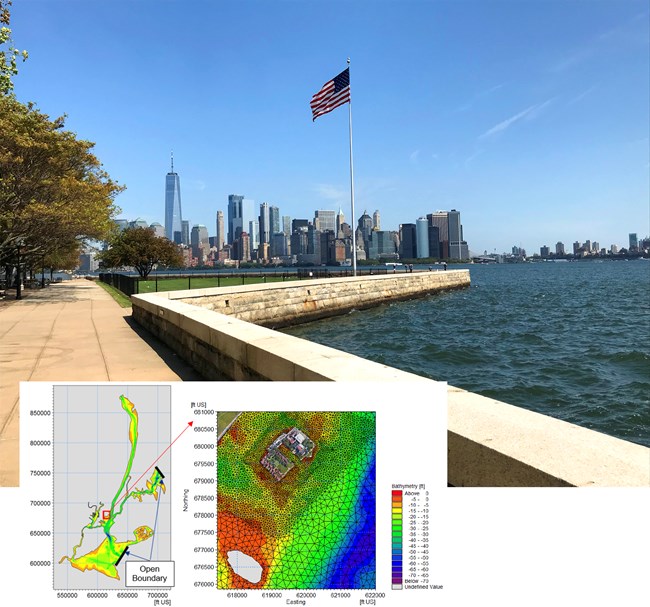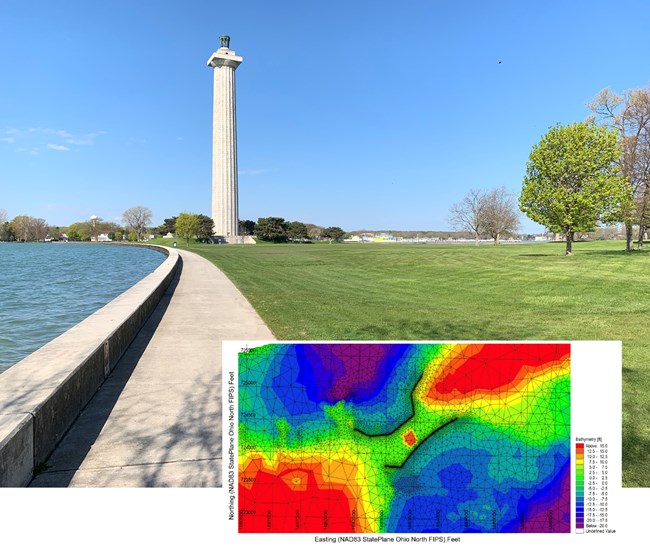Last updated: April 8, 2021
Article
National Park Service Focuses on Climate Resiliency to Protect Our Nation’s Treasures

Responding to climate change is one of the National Park Service (NPS) biggest challenges and championing efforts to restore ecosystems, recover imperiled species, protect night skies, and enhance visitor experiences, are all important to preserving our parks. National Park Week is an annual national celebration that allows people to discover and enjoy our country’s remarkable network of natural, cultural, and recreational sites.
Climate resiliency is at the forefront of NPS projects throughout the national park system. Two recent projects to mitigate storm surge at Ellis Island at Statue of Liberty National Monument in New York/New Jersey and Perry’s Victory and International Peace Memorial in Ohio provide excellent examples of how exactly NPS is protecting visitor resources into the future.
Ellis Island seawall, Statue of Liberty National Monument, New Jersey/New York
The historic 6,736 linear foot-long seawall surrounding Ellis Island was built using several construction systems between 1913 and 1934. The seawall is currently in poor condition, with displaced granite blocks and erosion in some joints. In September 2020, the NPS awarded a $30.8 million contract to stabilize and repair portions of the seawall and the ferry slip. Tide levels, sea level rise projections, extreme wind conditions (e.g. hurricanes), extreme wave modeling, hydrodynamic modeling, and ice are all considerations incorporated into the design of the seawall and ferry berthing system. This is a significant engineering upgrade to the existing system of seawalls that also preserves the historic character that the seawall and its granite masonry contribute to Ellis Island. The result is a seawall with a cohesive appearance that protects the island from storm surge into the future.

Perry’s Victory and International Peace Memorial, Ohio
The two seawalls that shield the low-lying island isthmus of Perry’s Victory and International Peace Memorial from Lake Erie will be raised 12 to 24 inches to reduce lake overtopping and regular park flooding. The stormwater drainage system will be almost completely replaced, including addition of two pumping stations, which will drastically improve park drainage and is scalable to be upsized for potential future higher precipitation and climate driven events. Tide levels, lake level projections, extreme wind conditions, extreme wave modeling, hydrodynamic modeling, flooding, precipitation, and ice are all considerations incorporated into the design of the seawall improvements and stormwater drainage system. This $27 million project to improve the seawalls and storm drainage will also preserve the aesthetics that the low-profile curved concrete seawalls add to the 352-foot memorial column that seemingly rises out of Lake Erie.
